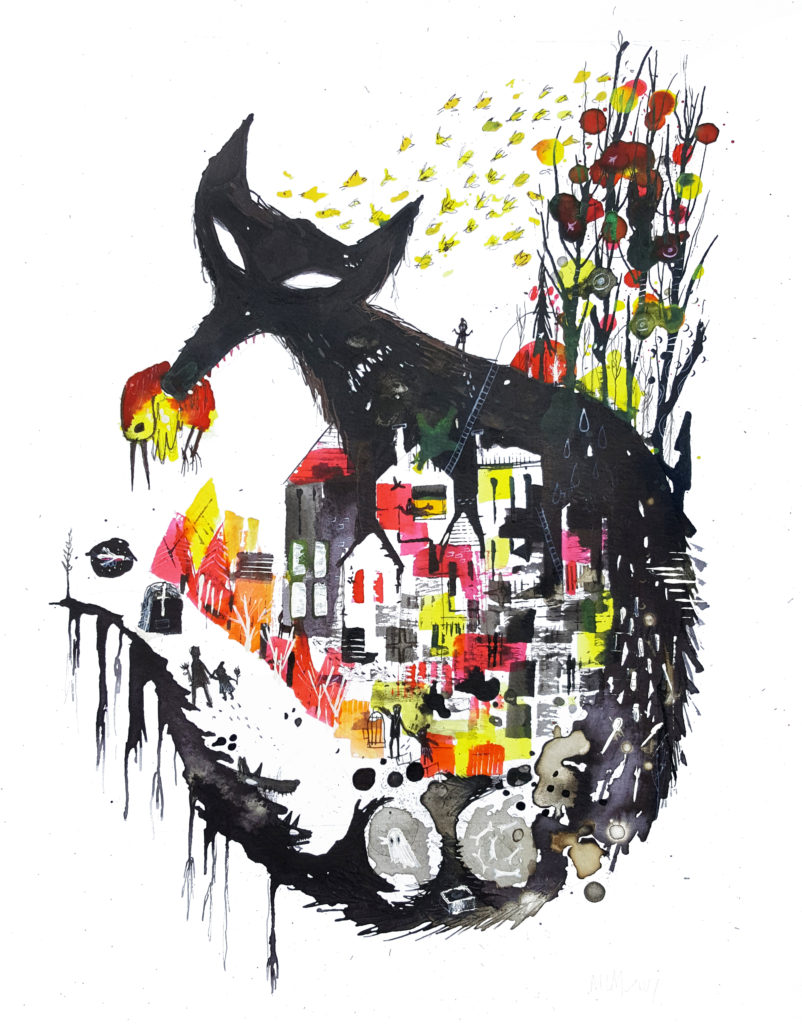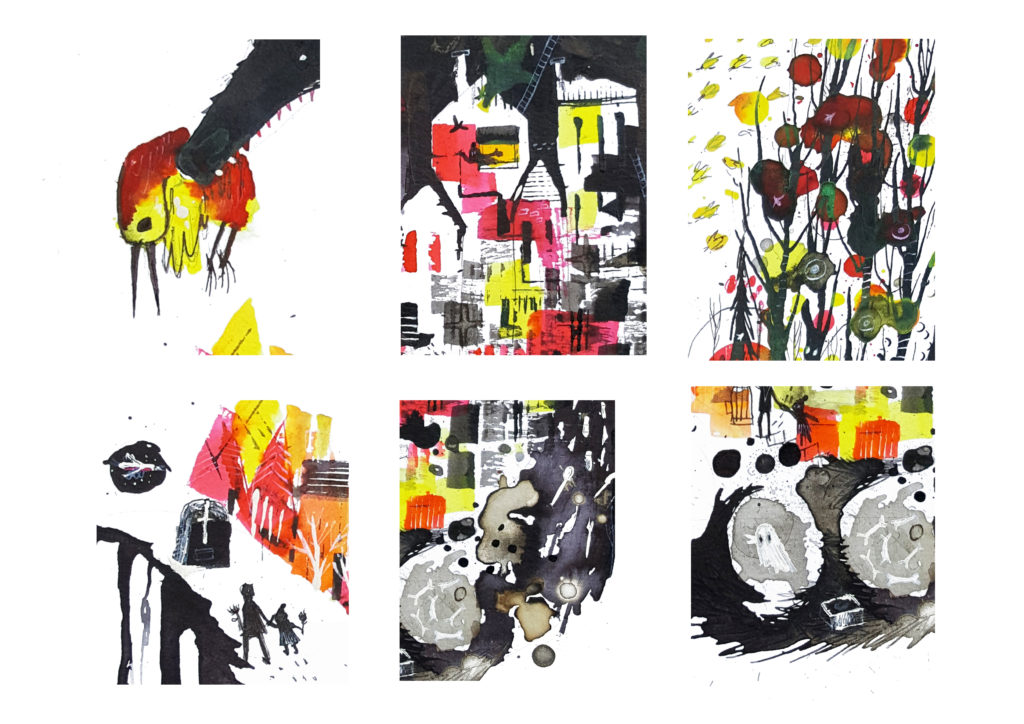A story requires some sort of narrative if it is to be classed as such. What I’m concerned with, is visual narrative. How far you can take a narrative with images alone, and how you can provoke an emotional response within the reader, are the areas that I’m researching.
Once the illustration is created, my narrative suddenly becomes less important. Once distributed, the story that I’d attached becomes irrelevant, other than to those who want to know what was behind its creation. Instead of handing a narrative to a reader, I’m far more interested in their interpretation of the elements I’ve presented.

My Narrative
To see the illustration the way I intended, I suggest viewing it before reading my narrative below. This way, you allow yourself to engage with it using your own knowledge and feelings, thus forming your own narrative.
In this synoptic, ‘Prey’, I’ve illustrated loss. My narrative begins near the top centre where a boy’s pet bird escapes through an open window. The boy didn’t make sure the window was closed because he thought his bird loved him and liked being his pet. The nature of a bird is to fly free, but this bird had lost it’s instincts after a safe and nurtured life in a cage. The bird flies straight to the trees and joins the flock, but he is different. He has forgotten that he is prey. He doesn’t know about danger, and the nature of other animals, and is caught by a fox who kills him to feed her young. In the meantime, the boy and his father are out looking for the bird. The boy climbs the hill but there’s no sign. The boy eventually realises that the bird is dead. He imagines the bird as a spirit and as bones. They bury a box with a feather in it to symbolise the bird, and again, humanise it. They visit the birds grave with flowers every day and the boy feels closer to the bird, and starts to accept his loss.
When I use symbols, I try not to be too obscure. Although there is a certain level of decoding required, I’ve tried to make the symbols within my own work quite simple – for instance, in ‘Prey’, I’ve used small symbols in the fox’s tail – cutlery – to suggest that the dead bird has been eaten. Obviously foxes don’t use knives, forks and spoons, but it symbolises eating to every age group.

I’ve researched established creators of the wordless picture book to find out what methods and systems they use to make their story heard. I found it easier to understand by breaking down the features of each illustrator and then making connections between them. This helped me to pull out common features and try and compare where I fit in and what techniques I could employ and bring into my own practice.
Shaun Tan
Obscure and hazy elements, never overly defined.
Characterisation is sophisticated and realistic.
Symbolism is not overly difficult to decode.
Sketchy line.
Pam Smy
Focus on line and detail, usually black and white.
Contrast used to create drama.
Fine detail, especially in outdoor scenery.
Cinematic quality to compositions.
Suzy Lee
Expression through medium and mixture of techniques – charcoal with photography, rough lines with flat colour.
Symbolism needs some sophisticated decoding at times.
Lighting used to dramatic effect – in collage work, the use of physical lighting helps to create this effect, while in flat work, stark black shadows against a white background.
